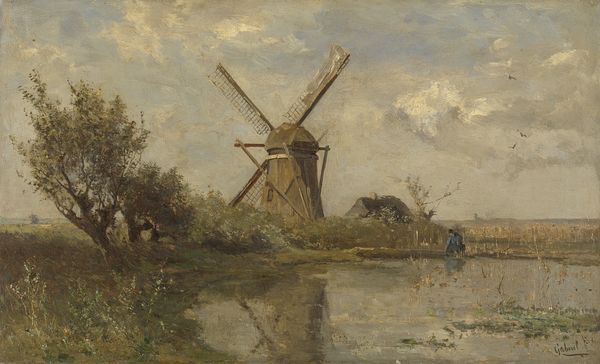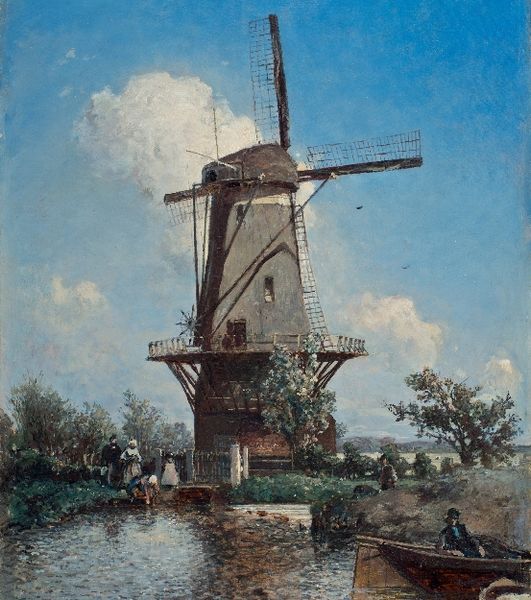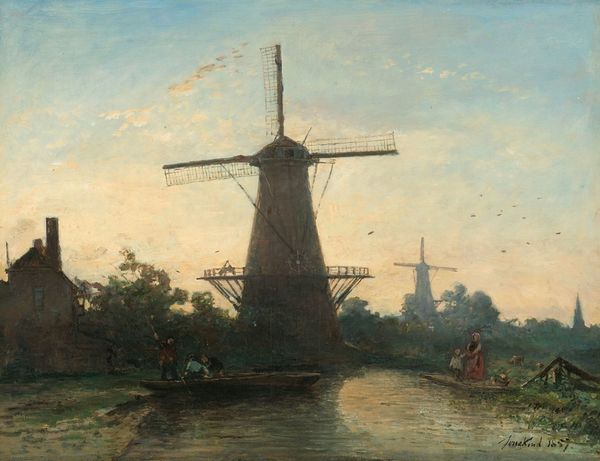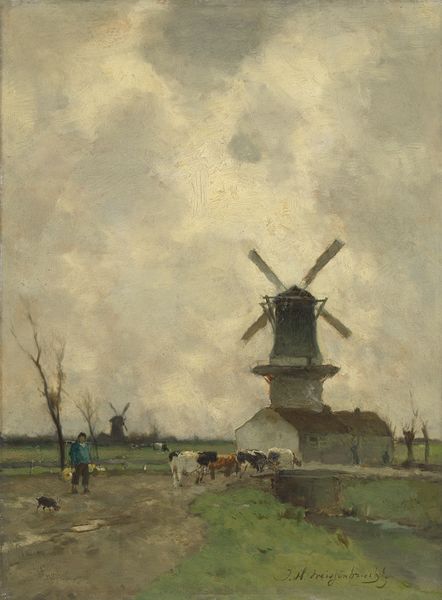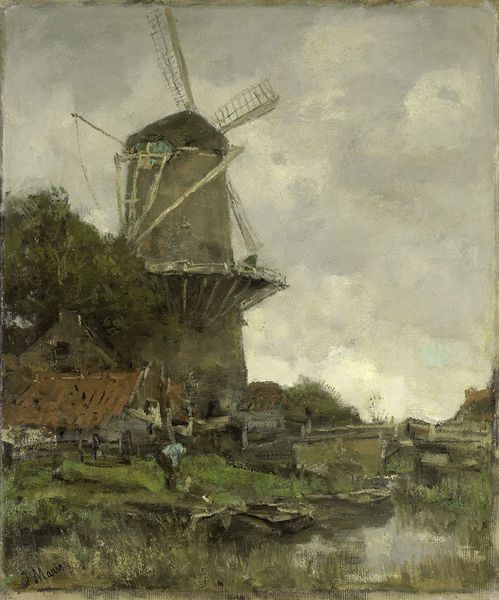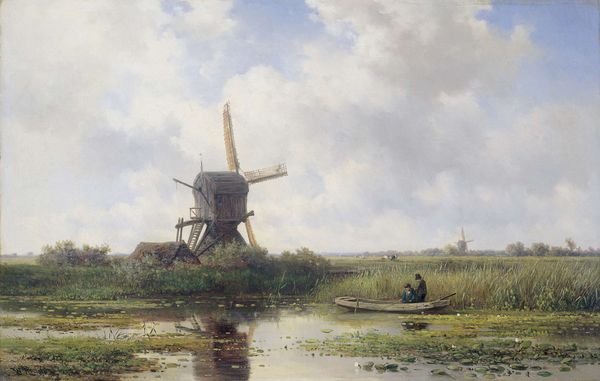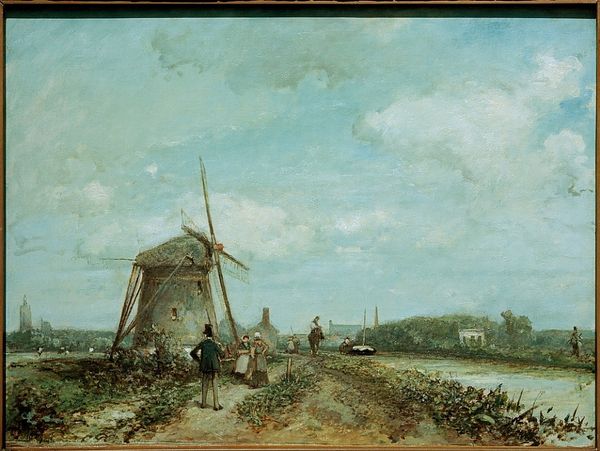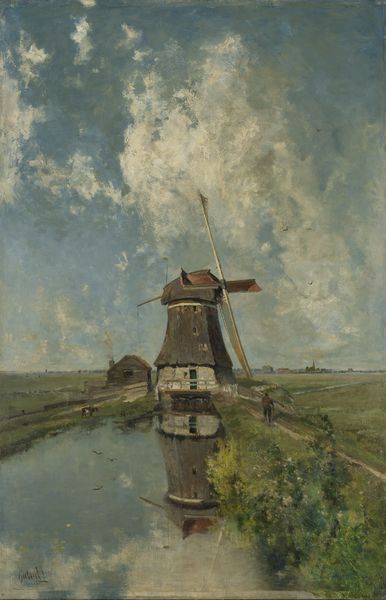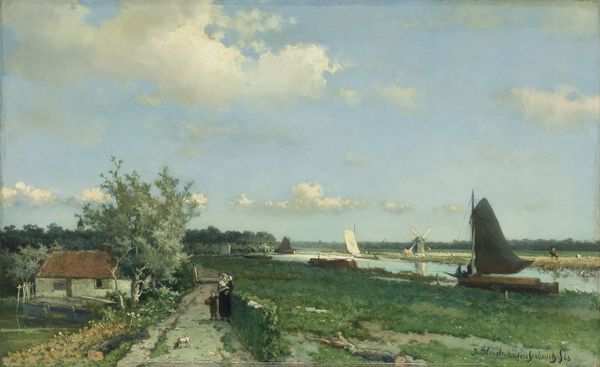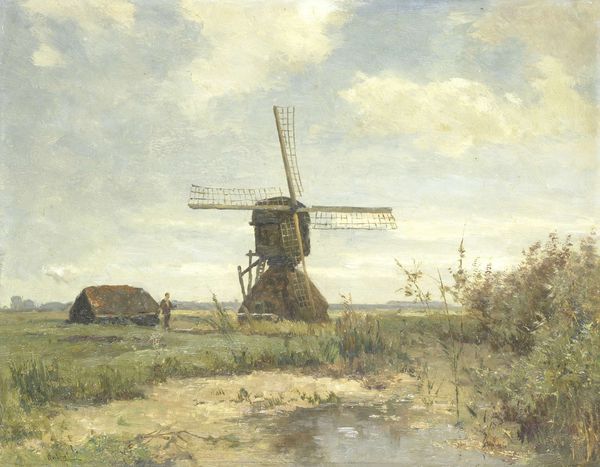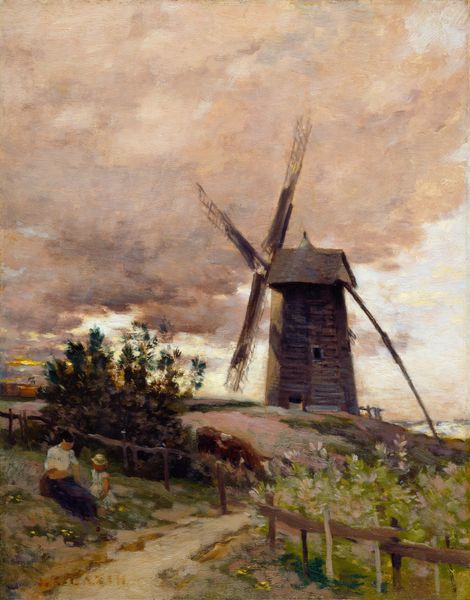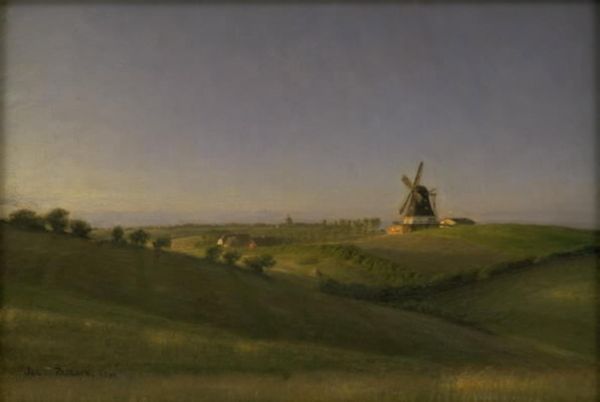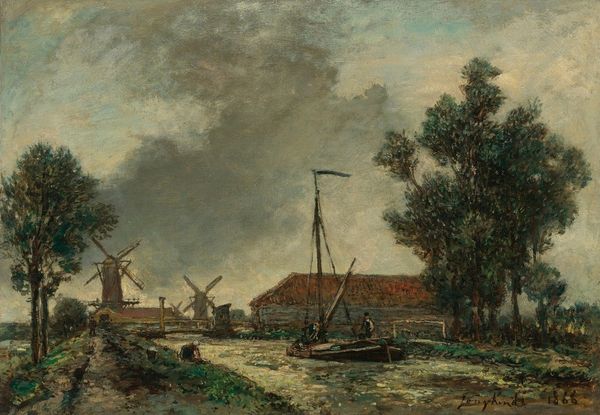
oil-paint
#
impressionism
#
oil-paint
#
landscape
#
oil painting
#
genre-painting
Dimensions: height 52 cm, width 81.5 cm, thickness 2.4 cm, depth 10.5 cm
Copyright: Rijks Museum: Open Domain
Curator: Take a look at "De Winkel near Abcoude," painted circa 1877 by Paul Joseph Constantin Gabriël, a piece held here at the Rijksmuseum. It’s an oil on canvas depicting a classic Dutch landscape. Editor: My first impression is one of tranquility, a gentle pastoral scene. The cows and windmills feel like such archetypal images, they trigger immediate associations with a specific time and place. Curator: Exactly! The placement of the windmills in the distance creates a powerful feeling of expanse, reflecting the changing social status and political view of the Netherlands. Gabriël's subtle use of light and color also served to capture that shifting identity through very commonplace scenes of agrarian life. Editor: And the windmills themselves, appearing as more than just functional structures, gain almost a monumental status on the horizon line. Windmills often represent industry, progress, but here they seem almost timeless and enduring against that flat landscape. They act as an anchor for both national identity, and a certain cultural memory. Curator: Absolutely. Remember that land reclamation and windmills went hand-in-hand, especially for the elite in this region, so what looks bucolic was also historically shaped by human engineering and labor policies. Even the muted tones he utilizes here convey something substantial regarding national identity; it almost becomes a symbolic representation. Editor: The grouping of cows along the river in the foreground, near those pollard willows, creates a kind of symbolic focus on the land as lifeblood, something central to community. Even a modern audience seems to feel a sense of connection to their roots simply by beholding these pastoral images. Curator: It underscores how Dutch Impressionism captured these changing relationships between people and land—rural realities made picturesque for an urbanizing nation, creating a sense of collective identity for new urban centers. The piece then acted as not only an artwork, but as a message concerning the industrial advancement and collective growth of the Dutch. Editor: The imagery certainly conveys this connection to Dutch cultural narratives, making it hard to disconnect the visuals with their associated symbolisms. It really illuminates the way these artistic traditions help create and cement a collective history. Curator: Seeing it this way underscores the ability of something as seemingly commonplace as an agrarian scene to subtly inform the cultural imagination for centuries. Editor: And appreciate how paintings like these serve as continuing threads connecting to not only Dutch art, but to wider visual and communal heritage as well.
Comments
No comments
Be the first to comment and join the conversation on the ultimate creative platform.
